 Every generation reinvents Sherlock Holmes to suit itself. The current revision, Sherlock, was created by the same team that is also at the helm of Doctor Who. This is totally appropriate, as Sherlock beat Doctor Who for the British Academy of Film and Television Arts (BAFTA) award for Best Drama Series. The announcement was made yesterday, on Sir Arthur Conan Doyle’s birthday. Watson would have been pleased, especially since the actor who plays Watson also won for Best Supporting Actor.
Every generation reinvents Sherlock Holmes to suit itself. The current revision, Sherlock, was created by the same team that is also at the helm of Doctor Who. This is totally appropriate, as Sherlock beat Doctor Who for the British Academy of Film and Television Arts (BAFTA) award for Best Drama Series. The announcement was made yesterday, on Sir Arthur Conan Doyle’s birthday. Watson would have been pleased, especially since the actor who plays Watson also won for Best Supporting Actor.
Sherlock is either a reboot or an update of the Holmes canon. The premise updates Holmes into the 21st century, complete with cellphones, GPS, non-smoking restaurants, competition from modern forensics, and modern psychiatric diagnosis of Holmes’ quirks. Sherlock knows he is a high-functioning sociopath. This doesn’t stop him from solving crimes that the police can’t. Watson is still a police surgeon invalided out from the Afghan war. It’s the same unwinnable war. Some things do not change.
I was astonished at how well this premise worked. It’s not the canonical Holmes, and yet it is. We forget that when Conan Doyle wrote Holmes originally, they were contemporaneous. Holmes was a creature of his times. It’s only to us that they are historical because the Victorian period is one that turned out to be a memorable epoch. And, ironically, part of the reason that the Victorian period is memorable is probably due to Holmes.
 I also watched the Robert Downey Jr. /Guy Ritchie version of Sherlock Holmes not too long ago. Once the main plot finally got going, I enjoyed the movie, and it was great steampunk, but…Downey just isn’t my Sherlock Holmes. The late Jeremy Brett still matches the portrait I see in my head when I think of Holmes, more or less. But the “great detective” has lent himself to a multitude of portrayals over the years since Conan Doyle first published Watson’s stories, and every character in the canon has been given his, or her, due.
I also watched the Robert Downey Jr. /Guy Ritchie version of Sherlock Holmes not too long ago. Once the main plot finally got going, I enjoyed the movie, and it was great steampunk, but…Downey just isn’t my Sherlock Holmes. The late Jeremy Brett still matches the portrait I see in my head when I think of Holmes, more or less. But the “great detective” has lent himself to a multitude of portrayals over the years since Conan Doyle first published Watson’s stories, and every character in the canon has been given his, or her, due.
The original versions of the Sherlock Holmes canon remain cracking good stories, which is one reason why they have continued to be read and re-interpreted to this day. But the fun is in the re-imaginings. TV’s updated Sherlock is just the latest in a very distinguished line.
The resemblances between Sherlock Holmes and Dr. Gregory House on House M.D. have been commented on too many times to be repeated. The creator of House has admitted that the show is an homage to Holmes in a number of ways. Holmes=Homes=House just for starters. There were even two episodes of Star Trek, the Next Generation where Data portrayed Sherlock Holmes on the holodeck.
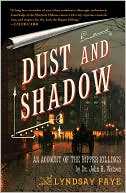 Authors have continued to push the “world’s first consulting detective” into cases that his original biographer did not pursue. One case in point, Holmes and Jack the Ripper, were, or would have been, contemporaries. Had Holmes existed, Scotland Yard would surely have called him in to investigate such a notorious and inflammatory series of murders. In Dust and Shadow, by Lyndsay Faye, Holmes is both a suspect and an investigator into the Ripper killings, as Watson follows his friend into horror.
Authors have continued to push the “world’s first consulting detective” into cases that his original biographer did not pursue. One case in point, Holmes and Jack the Ripper, were, or would have been, contemporaries. Had Holmes existed, Scotland Yard would surely have called him in to investigate such a notorious and inflammatory series of murders. In Dust and Shadow, by Lyndsay Faye, Holmes is both a suspect and an investigator into the Ripper killings, as Watson follows his friend into horror.
On the other hand, if you prefer villains as heroes, Michael Kurland has written a series where Holmes is a bumbling, drug-addled idiot, and Professor Moriarty is the actual hero of the piece. The Great Game concerns the “Great Game” of European politics in end of the century—the 19th century, that is—Europe, as the great powers tried to stave off, or speed up, the advent of the “Great War” that we know as World War I.
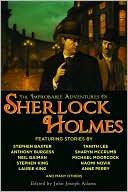 Holmes has featured in other worlds, particularly in the recent collection The Improbable Adventures of Sherlock Holmes, which includes the award winning story by Neil Gaiman, “A Study in Emerald”, where Holmes and Moriarty join forces in a parallel universe in which the Cthulhu Mythos of Lovecraftian invention has taken over Victorian England. Very improbable indeed!
Holmes has featured in other worlds, particularly in the recent collection The Improbable Adventures of Sherlock Holmes, which includes the award winning story by Neil Gaiman, “A Study in Emerald”, where Holmes and Moriarty join forces in a parallel universe in which the Cthulhu Mythos of Lovecraftian invention has taken over Victorian England. Very improbable indeed!
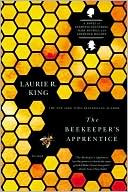 Last, but absolutely not least, the series which contains the answer to the question, “What did Holmes do after he retired to keep bees in Sussex?” His last recorded case (His Last Bow) takes place in August, 1914. And then? According to Laurie R. King, in The Beekeeper’s Apprentice, he kept bees, took way too much of his 7% solution of cocaine, and was slowly killing himself in boredom. One afternoon in 1915 a fifteen-year-old girl tripped over him on the Sussex Downs with her nose buried in a copy of Virgil. And the second act of his life began.
Last, but absolutely not least, the series which contains the answer to the question, “What did Holmes do after he retired to keep bees in Sussex?” His last recorded case (His Last Bow) takes place in August, 1914. And then? According to Laurie R. King, in The Beekeeper’s Apprentice, he kept bees, took way too much of his 7% solution of cocaine, and was slowly killing himself in boredom. One afternoon in 1915 a fifteen-year-old girl tripped over him on the Sussex Downs with her nose buried in a copy of Virgil. And the second act of his life began.




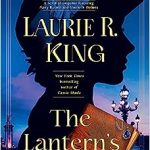
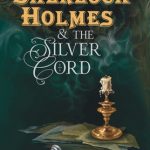

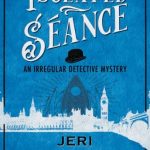
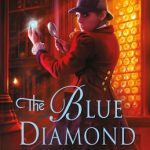
One thought on “Holmes is everywhere”
Comments are closed.